► Cupra Terramar is a family-sized SUV
► Stylish but practical MQB Evo variant
► 261bhp 2.0-litre TSI tested in the UK
The Cupra Terramar is the latest chapter in Cupra’s short but successful history – not least if you define success by the amount it’s put parent brand Seat in the shade. This is another decent SUV aimed at the family-friendly end of this booming sector, and is thus a little confusing, since it feels like Cupra already has three entrants in this area of the market. But don’t let that put you off.
The Terramar is essentially a heavy reskin of the latest Volkswagen Tiguan, and based on the same kit of VW Group MQB Evo parts. This means it’s a more practical proposition than the coupe-like Cupra Tavascan and Cupra Formentor, and more up-to-date than the ageing Cupra Ateca, a car the Terramar is also usefully larger than. It’s available with mild hybrid, pure petrol and plug-in hybrid powertrains.
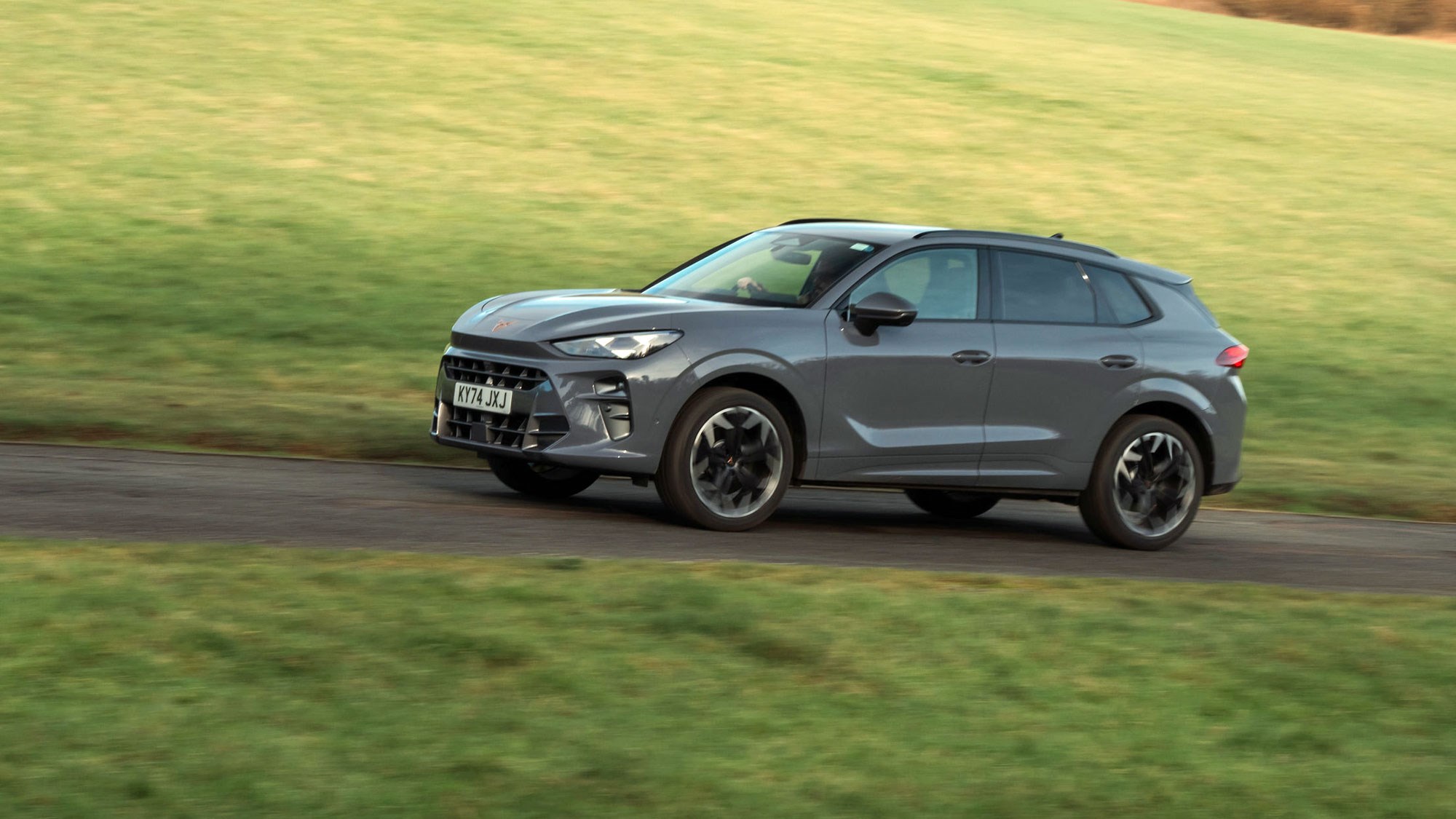
That’s right, even Cupra is catering for a cooling electric car market and changing consumer demand. Although that’s not so say it hasn’t been in the plan for a while; we first saw the Terramar at the brand’s Unstoppable Impulse event 2022. And despite their evidently more sensible approach to this model, CEO Wayne Griffiths is adamant that it’s still every bit a Cupra.
For the head of the Cupra brand – sorry, ‘tribe’ in their local lingo – the Terramar is about growing in size, model line-up and, crucially, audience. It should get Cupra in front of more eyeballs and in more driveways than anything before – and therefore bring in more cash. But does Cupra’s sporting DNA stretch in this direction without snapping a tendon or something?
To find out, we’ve been driving the most potent 261bhp 2.0-litre turbo model, both at home and abroad – and have a separate page for the Terramar e-Hybrid plug-in hybrid review.
At a glance
Pros: Distinctive looks yet still practical, grippy and precise driving experience, great value for money
Cons: A little cosy for rear passengers, slightly firm ride
What’s new?
The Cupra Terramar is designed to slot into the mid-sized SUV segment. At 1584mm tall, 1863mm wide and 4519mm long (with a wheelbase of 2681mm) its dimensions are pretty much par for the course, and it’s similar in size to its MQB Evo stablemates. That said, it is noticeably lower than the Tiguan, and feels a smaller car as a result.
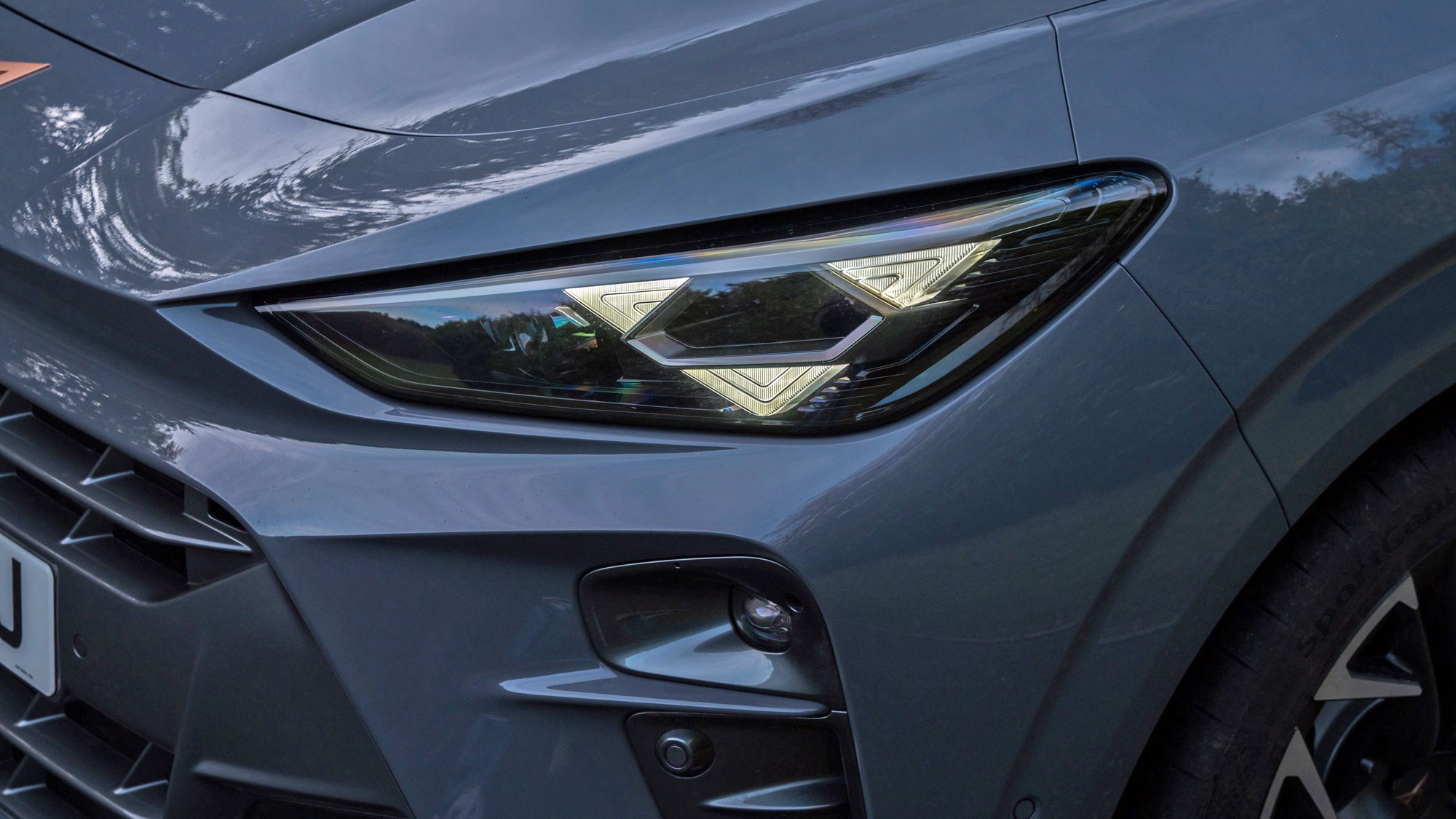
Cupra’s angular ‘emotional’ design cues have been wrapped over VW Group’s latest hardware, but the results aren’t as cynical or as disjointed as you’d expect; the Terramar is in fact a cohesively distinctive-looking SUV. Key to the mix are techy Matrix LED Ultra headlights that feature the brand’s new triangle-focused light signature. The rear has similarly intricate lamps connected by a full-width light bar, and there’s also an illuminated Cupra sign to make it stand out at night.
What are the specs?
There are five powertrains in total: two PHEVs, one mild-hybrid – all three using a 1.5-litre turbo engine – and two pure petrol motors. These 100% ICE variants use VW’s familiar 2.0-litre TSI engine.
The base 2.0 petrol model puts out 201bhp and 184lb ft of torque, while the version we’ve been driving pushes that number up to 261bhp and 295lb ft of torque. Both come with 4Drive all-wheel drive and a seven-speed DSG automatic transmission; as is increasingly common, especially in the VW Group, there is no manual gearbox option on any Terramar.
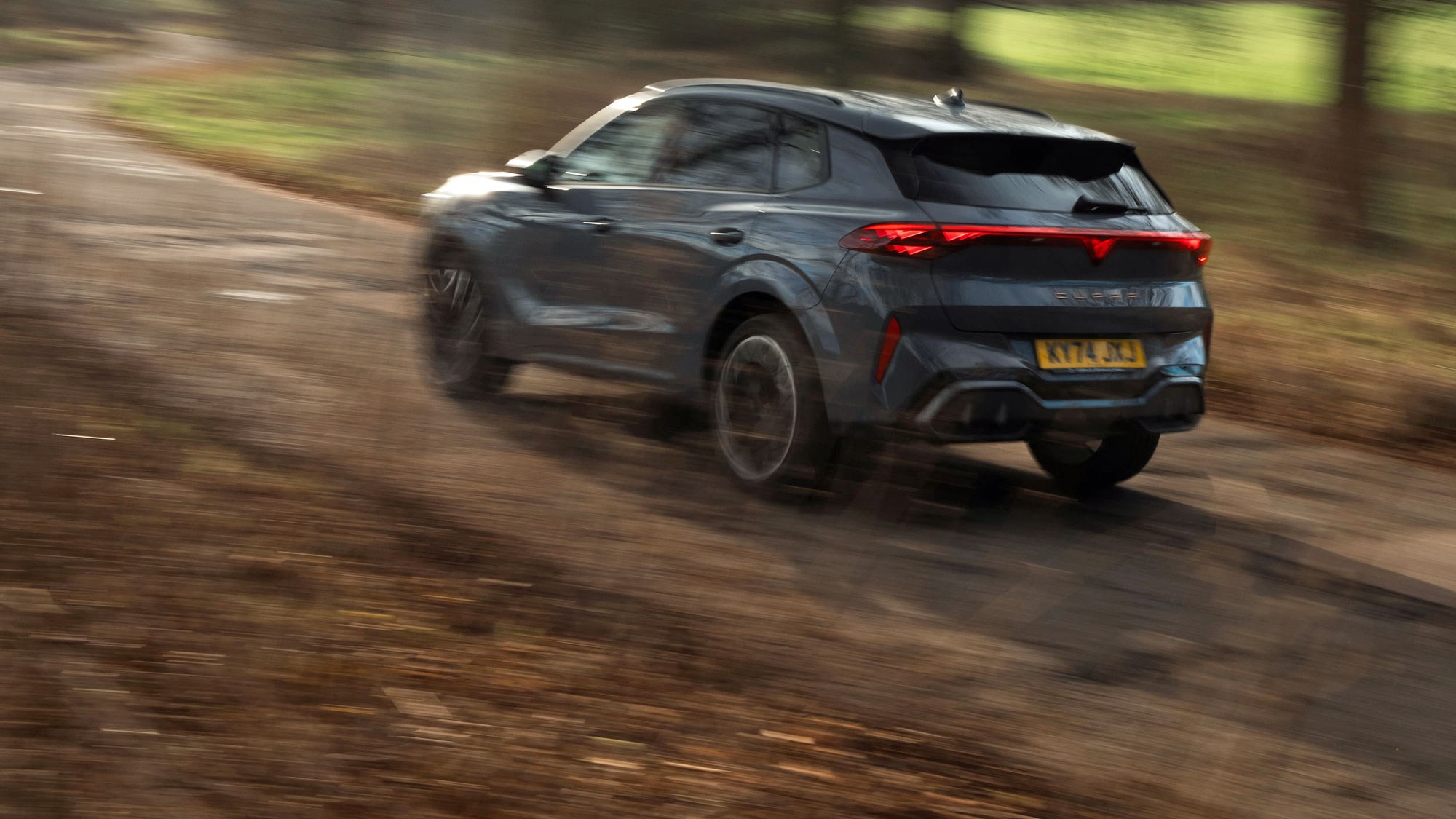
The 261bhp petrol goes from 0-62mph in 5.9 seconds, making it the fastest Terramar you can buy by some margin. While the top-of-the-range e-Hybrid has slightly more power (268bhp), at 1904kg it also weighs 154 kilos more than the 1750kg TSI, a big enough difference to see the plug-in’s 0-62mph fall to 7.3 seconds – which is 0.2sec slower than the 201bhp petrol.
All models have their suspension lowered by 10mm compared to the Tiguan, and they also benefit from front MacPherson struts and a rear-multilink setup. There’s progressive steering on the front axle and uprated six-piston Akebono brakes available as an option. Cupra has also tweaked the latest two-valve Dynamic Chassis Control (DCC) that’s standard on the sportier VZ models. The ESC stability control can be turned all the way off on these, if that matters to you.
How does it drive?
The 261bhp 2.0-litre petrol is similar to that fitted in the current Golf GTI, and in terms of outright pace, the Terramar isn’t far off hot-hatch speed. If it feels a little flat to you initially, try the Sport mode for the gearbox, which makes the engine feel responsive and alive – and there’s enough torque to make light work of most situations. The enhanced engine noise can be a little jarring, but you can adjust this through three settings, and generally we’re big fans of the engine up front.
Straight-line speed is one thing; we’re pleased to report that the petrol Terramar is relatively agile too. The huge optional Akebono brakes shed speed in a strong but relatively predictable way, and in the sportier modes the steering is heavy and precise – perfect for inducing confidence on turn-in, which is sharper than the equivalent Tiguan’s, if not as engaging as a Ford Kuga or (much pricier) BMW X3.
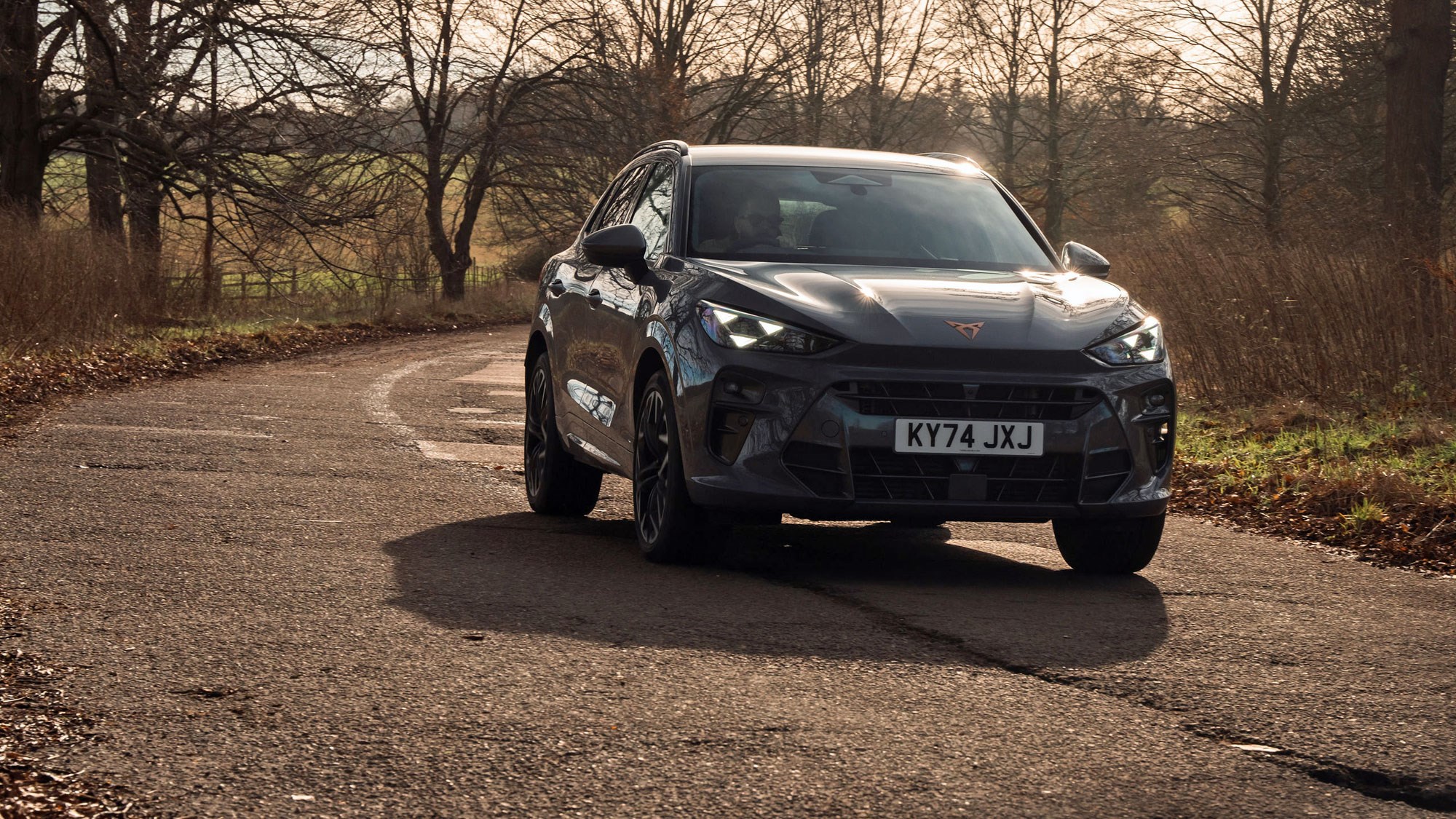
It’s not hugely feelsome or playful, but the Terramar has a nice balance of impressive mechanical grip and body roll, so you really feel it bite on the way into a corner. Stamp on the throttle on the other side, and the four-wheel drive pulls you out with tenacious guile. Traction is strong, even in greasy British conditions, and if you favour predictable precision you’ll have plenty of fun. It can certainly cover ground very quickly.
Cupra favours a firmer ride, but even on some scarred tarmac around the Pennines this rarely becomes distractingly uncomfortable. The DCC offers a pretty wide range of adjustment over the damping response – going beyond the default Comfort and Cupra settings in either direction – so you can have some fun trying to find your ideal compromise between the springs and the shocks. Just be warned that more sensitive passengers may be less keen on the dynamic ‘sportiness’ than the driver is…
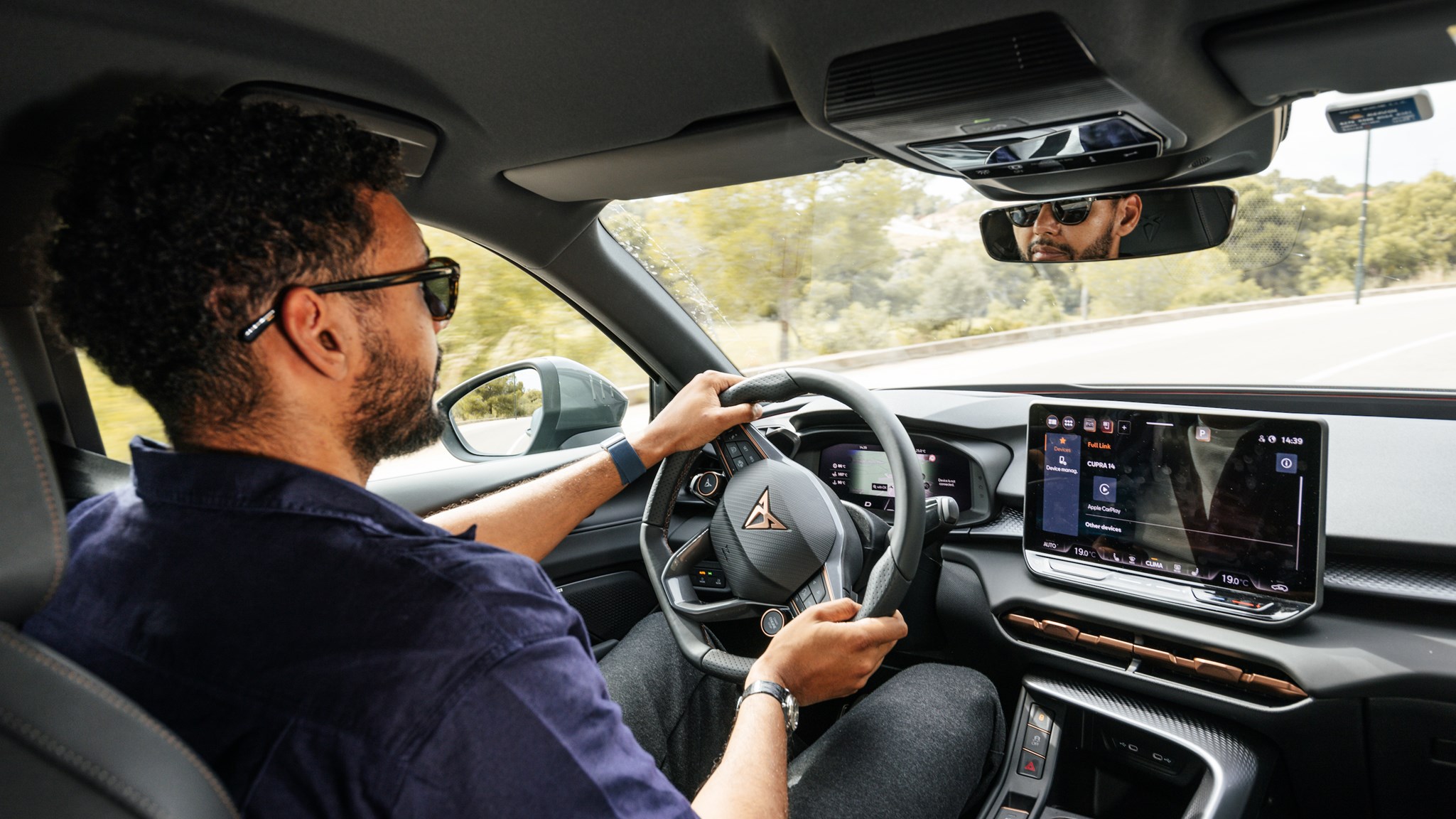
The 2.0-litre Terramar is notably more tied-down and composed than the heavier e-Hybrid in our experience.
What about the interior?
While not as wild as some of Cupra’s interiors, the Terramar’s cabin still stands out in a sea of blandness in this sector, thanks to some interesting angular elements, metallic finishes and its sharp 12.9-inch infotainment screen. You’ll also find plenty of tech, because the Terramar comes very well equipped as standard.
There’s no option for the enormous 15.1-inch screen upgrade available in the Tiguan, but the software is easy to get to grips with and offers some customisation to make it easier to find the things most important to you. We’d still like a few more physical buttons, though, and Cupra misses out on the neat multifunction dials VW and Skoda have started using.
Wireless charging is included and there’s an optional 12-speaker, 390-watt Sennheiser-branded stereo system. We sampled some tunes from Apple Music’s default radio station with good results. Bass was punchy on hip-hop and dance tracks, while vocals sounded clear and undistorted. All Terramars also get front and rear parking sensors, a rear-view camera, lane assist and adaptive cruise control as standard.
Big front seats, a driver-centric dashboard and that lower roofline make the front feel cosy – in the rear it arguably becomes cramped. The rear bench does slide and recline, as well as split-fold 40:20:40, but it doesn’t ever come across as generously roomy. Our 6ft 3in tester could sit behind himself, but only by compromising his ideal driving position by an inch or two, helped by a recess in the back of the front seats.
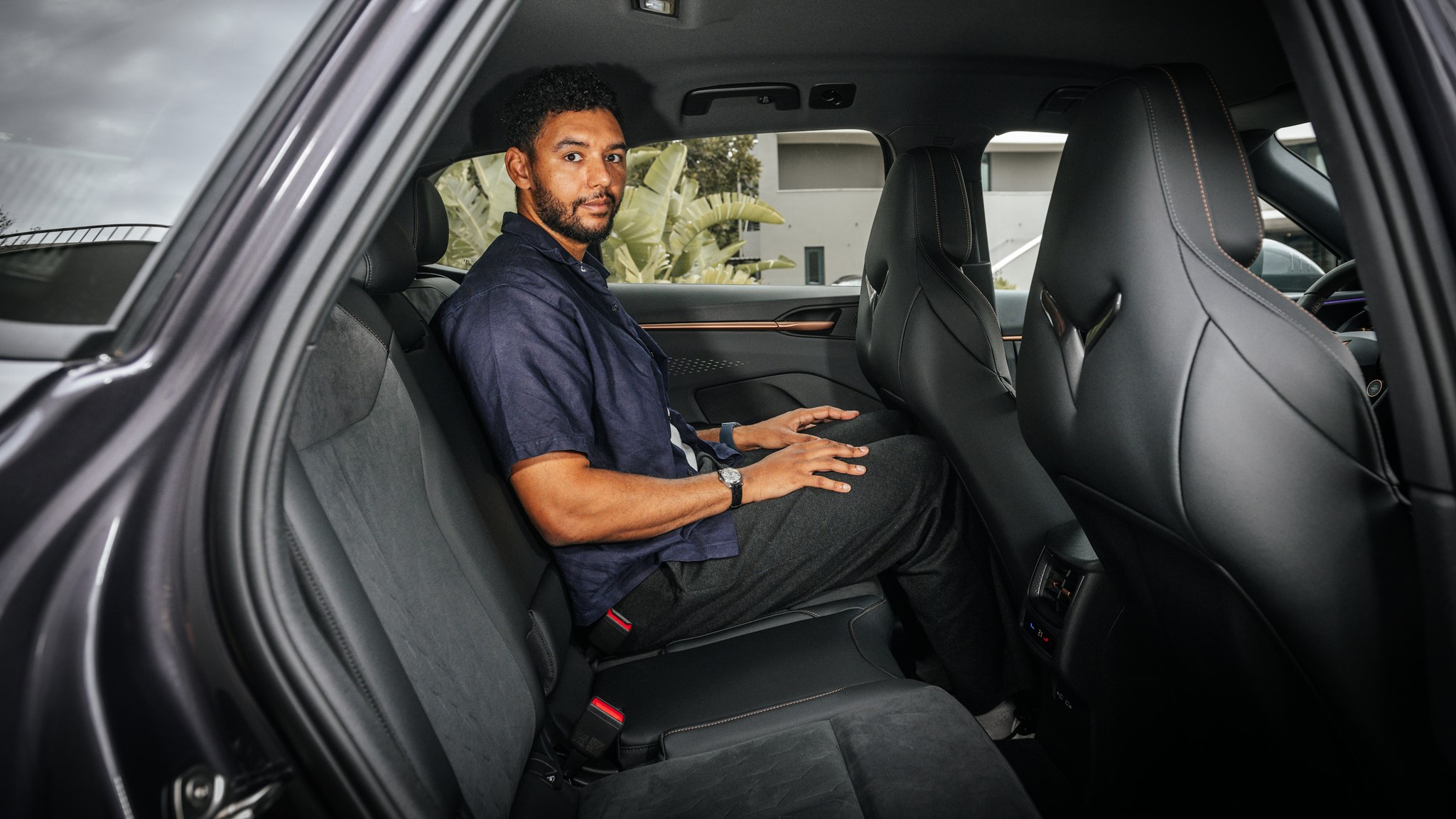
The lower roofline makes installing child seats a touch awkward, too, but 642 litres of boot space below the parcel shelf is extremely competitive for the class – even if this does dip to 540 litres with the back seats in their most passenger-friendly configuration. With the rear seats folded, up to 1544 litres of space is available. In terms of rivals, a Tiguan is bigger inside, but not much else is in this class.
Cupra offers three interior packages: Deep Ocean, Moon Light and High Canyon. The first uses 100% upcycled Seaqual yarn made from marine plastics. The second is dark grey and uses 73% polyester, while the High Canyon is a burgundy number that uses leather tanned with a plant-based process. All three suit Cupra’s more fashionable palette, but the leather seats did squeak a bit when we tested the Cupra Terramar.
Before you buy
The 2.0-litre petrol Cupra Terramar faces competition from all sides; from within Cupra’s own model range, from its MQB Evo relatives elsewhere in the Volkswagen empire, and finally from other cars in its hotly contested sector.
First up is the Terramar e-Hybrid which it beats pretty convincingly. More agile and faster in a straight line, the petrol is cheaper to buy too. In comparable trim, the petrol car we drove cost £46,040 to the hybrid’s £49,460.
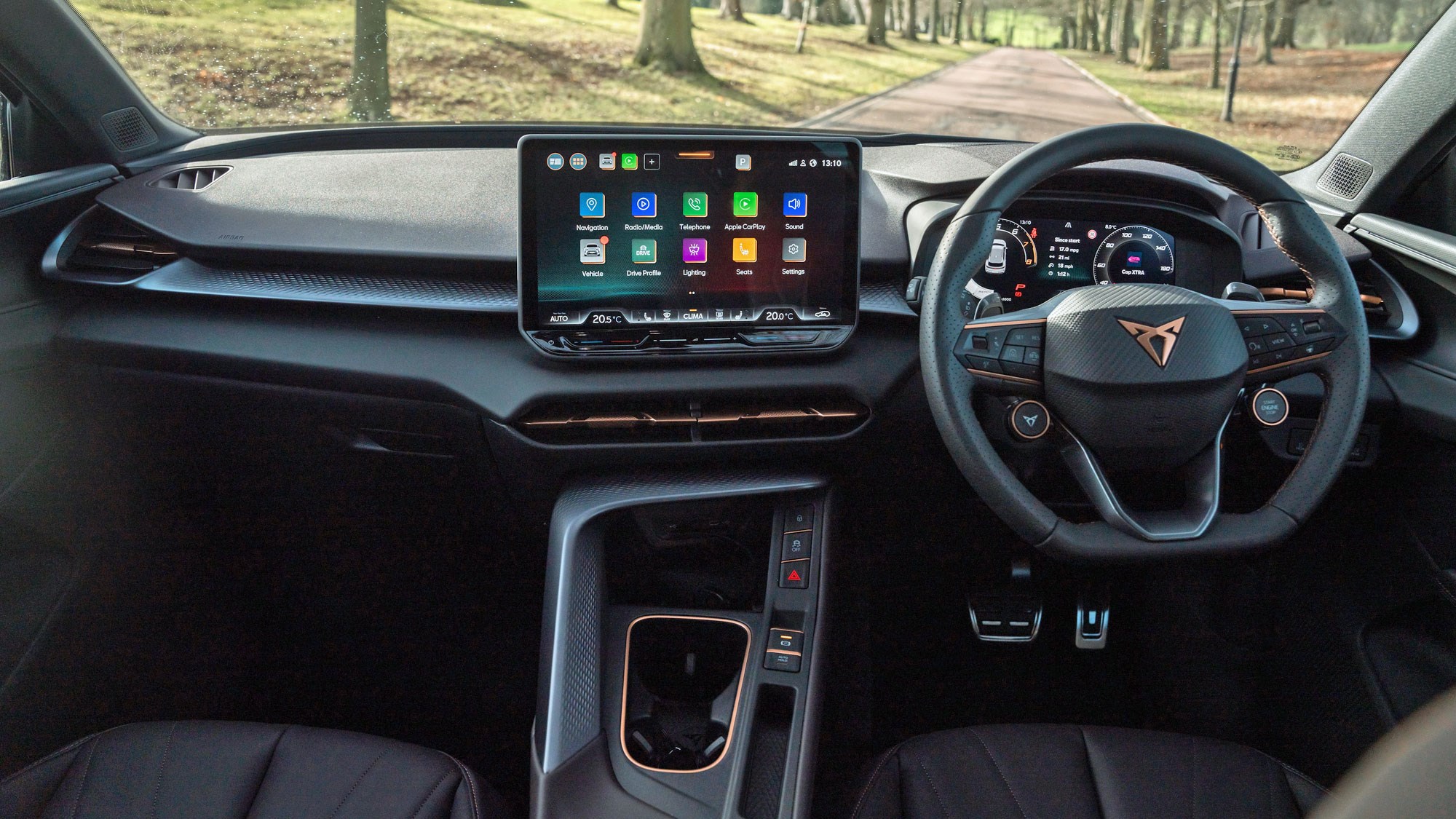
Opt for VZ1 trim instead of the higher VZ2 spec, and those numbers go down to £43,390 and £46,810. The difference between VZ1 and VZ2 includes things like 20-inch wheels instead of 19-inch rims, a head-up display and other bits like lane assistance, performance tyres and leather seats. Both VZ trims get dynamic chassis control and the ability to turn off ESC.
There are less sporty V1 and V2 trim variants as well, but neither the top hybrid nor top petrol is available in these.
Compared with the in-house competition from the Volkswagen Tiguan, the Terramar doesn’t look much cheaper at a glance. But examine the kit list and you’ll find the Cupra comes far more generously equipped – the 261bhp Tiguan we recently tested was optioned up to over £56,000 (a few years ago, this would have been inconceivable in this sector!), and a lot of that gear was included on this equivalent VZ2 Terramar.
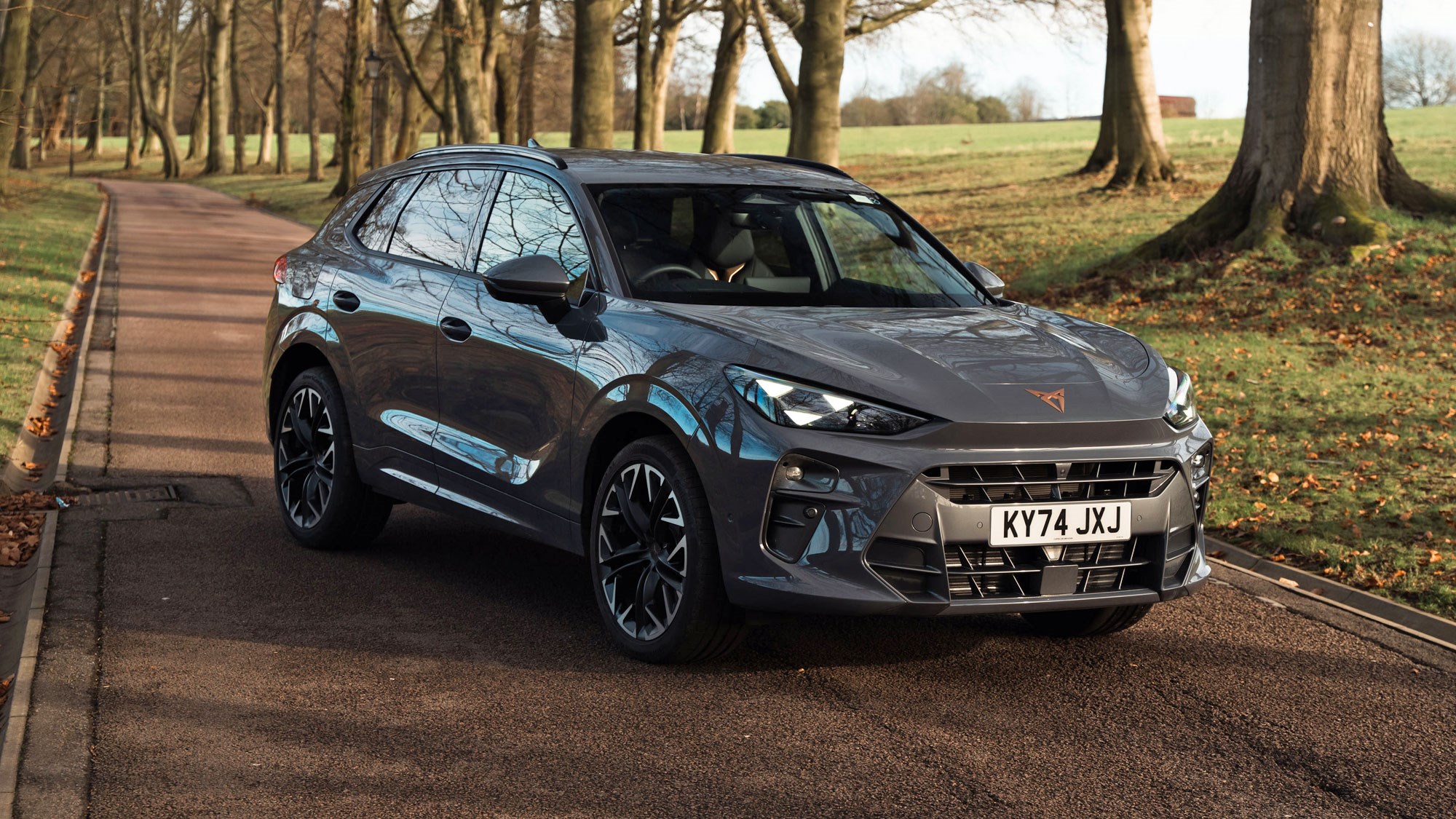
Want something more exciting still? Try the Kuga or the X3, both of which are more involving to drive. But the Terramar is a fine effort, and its strong value and practicality certainly sells it well.
Verdict
The Terramar may be the most grown-up Cupra so far, but in 2.0-litre petrol form it has enough character, style and importantly performance to make sense. It’s practical and refined when it needs to be, but on more demanding roads it still feels quick and rewarding. Tap the mode button to get to the spicier Cupra settings and the work of Cupra’s engineers is evident.
Compared to the e-Hybrid versions, the 261bhp petrol feels more alive, with brakes that are easier to modulate and a power delivery that is less disjointed. Throw in a reduction in weight and it’s an altogether more exciting car to drive – despite its slightly lower power figure.
Is this as exciting as a Born VZ or a Formentor? Not quite – but it’s a Cupra for a new and altogether larger audience. And we think that audience will appreciate the effort that’s been made.